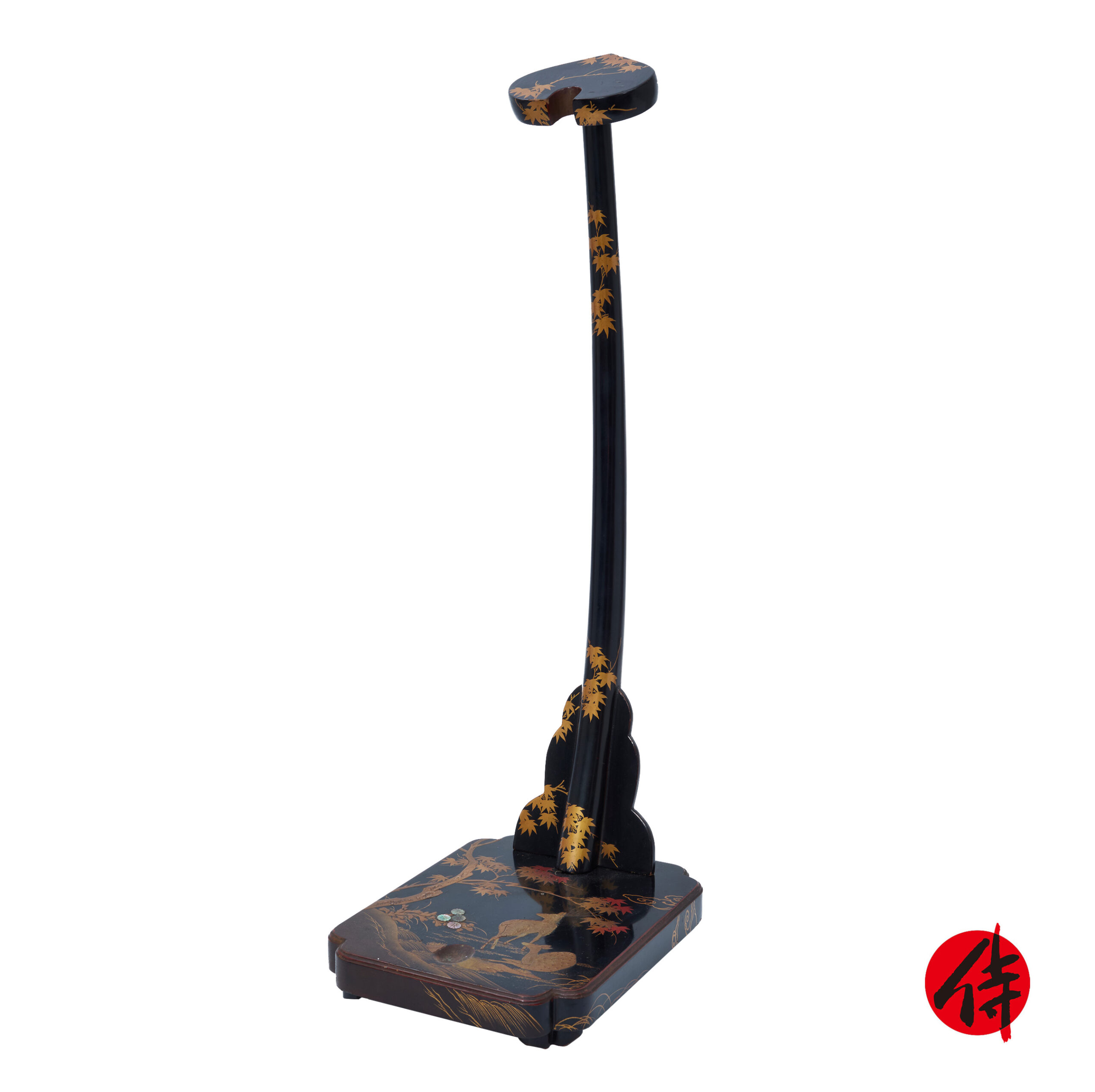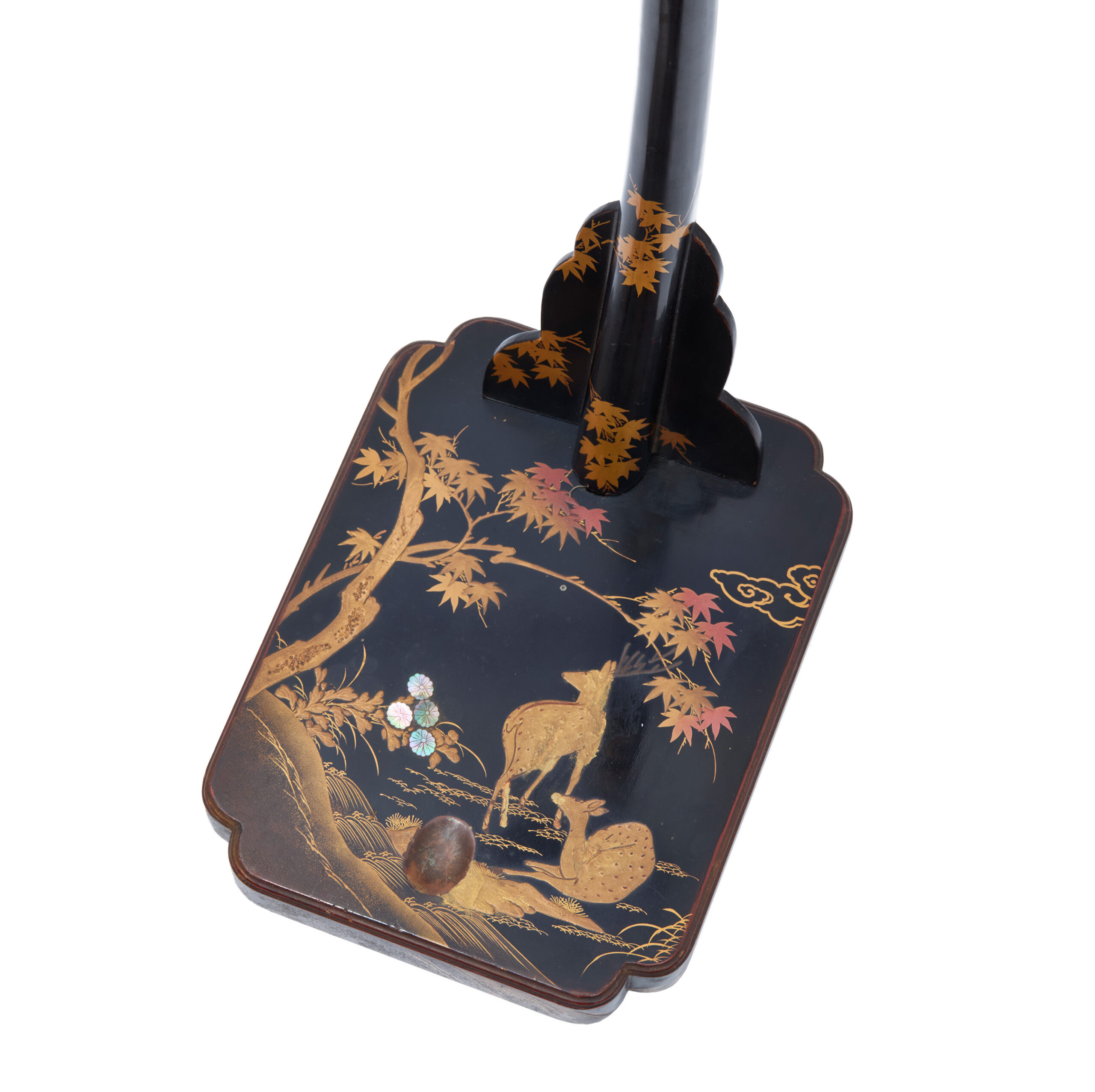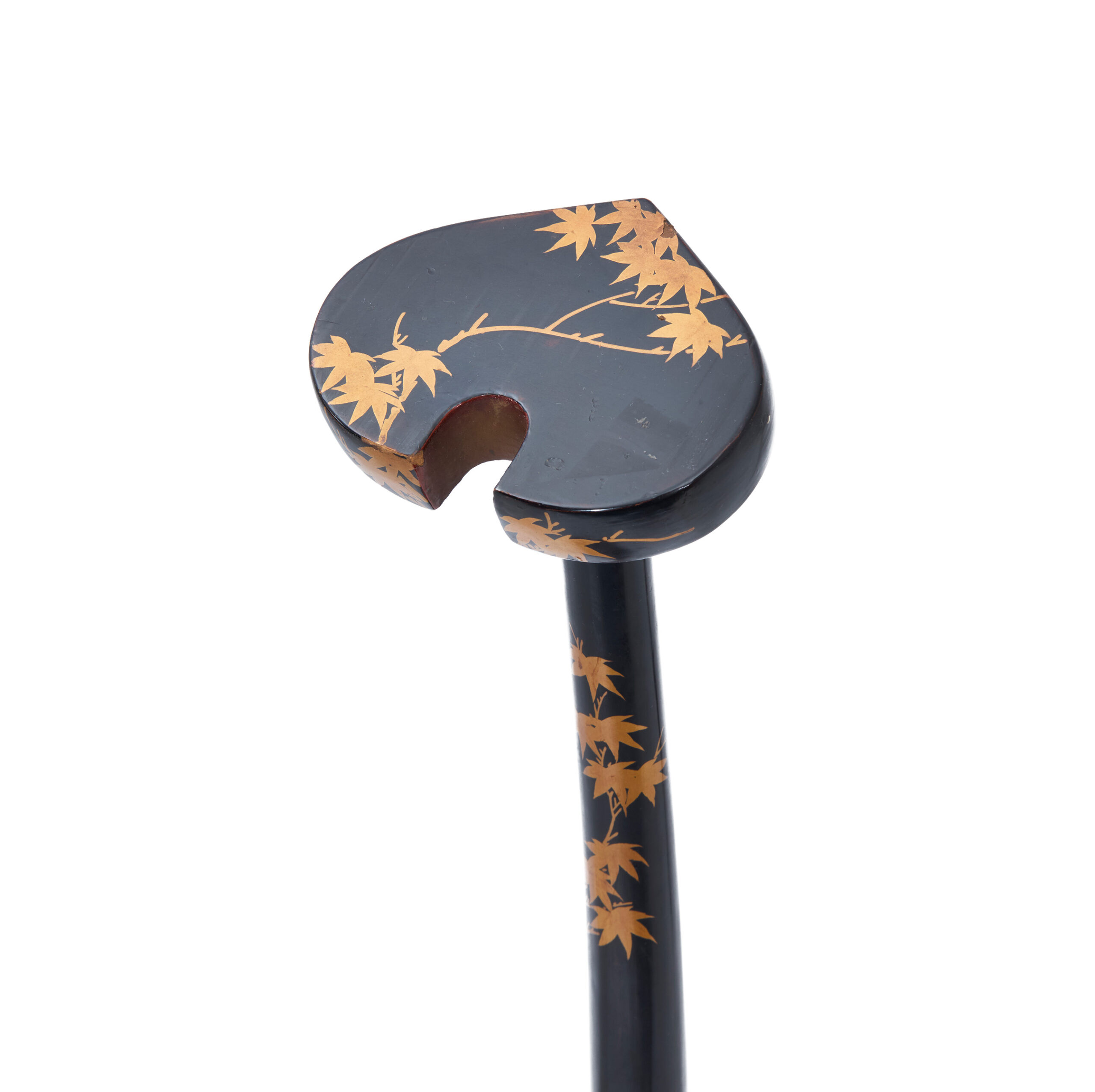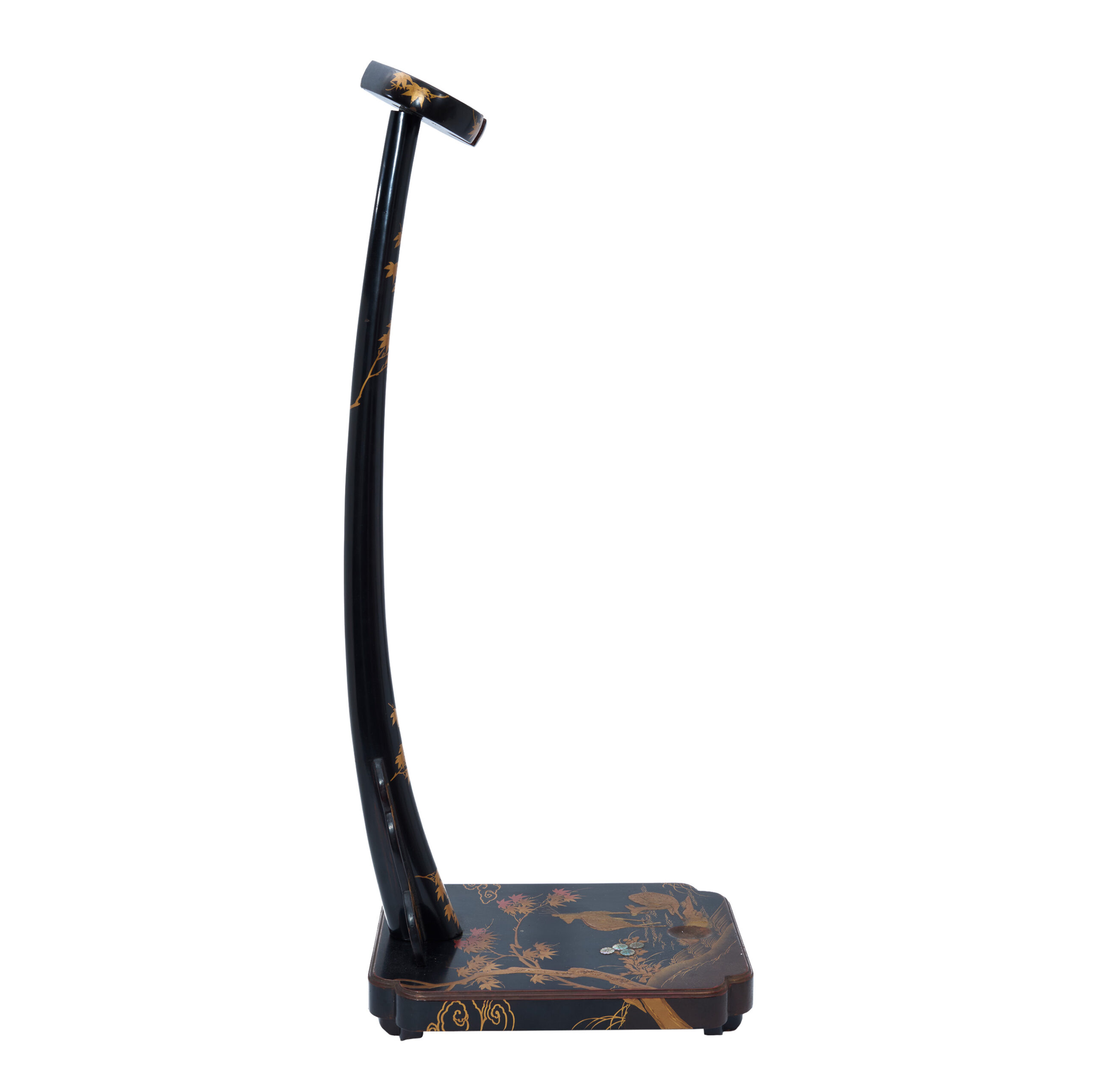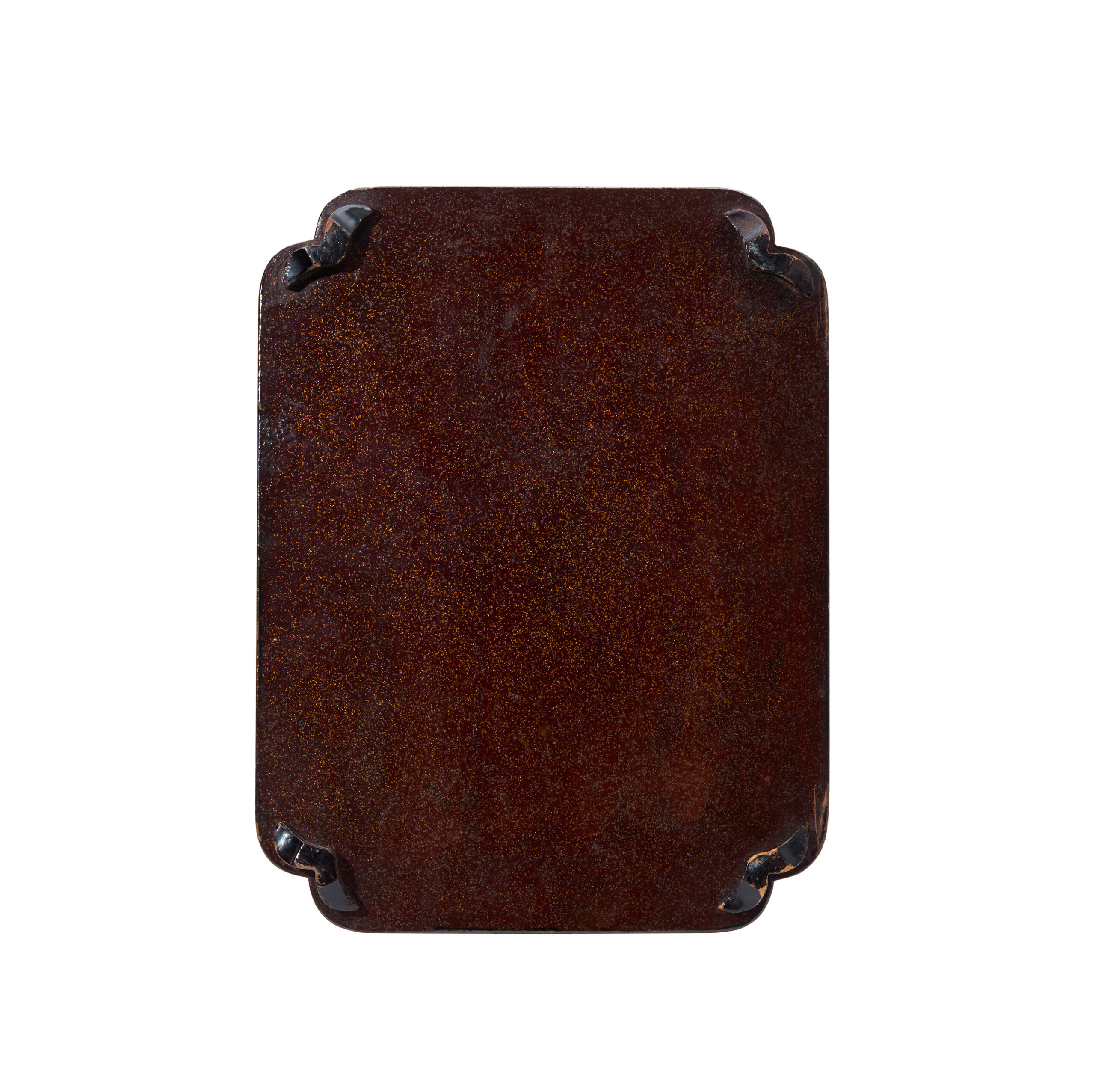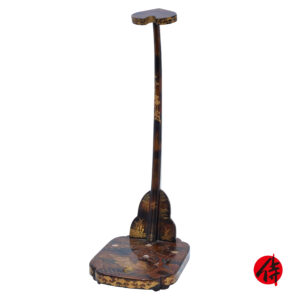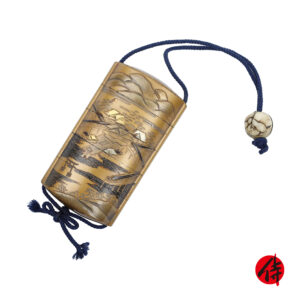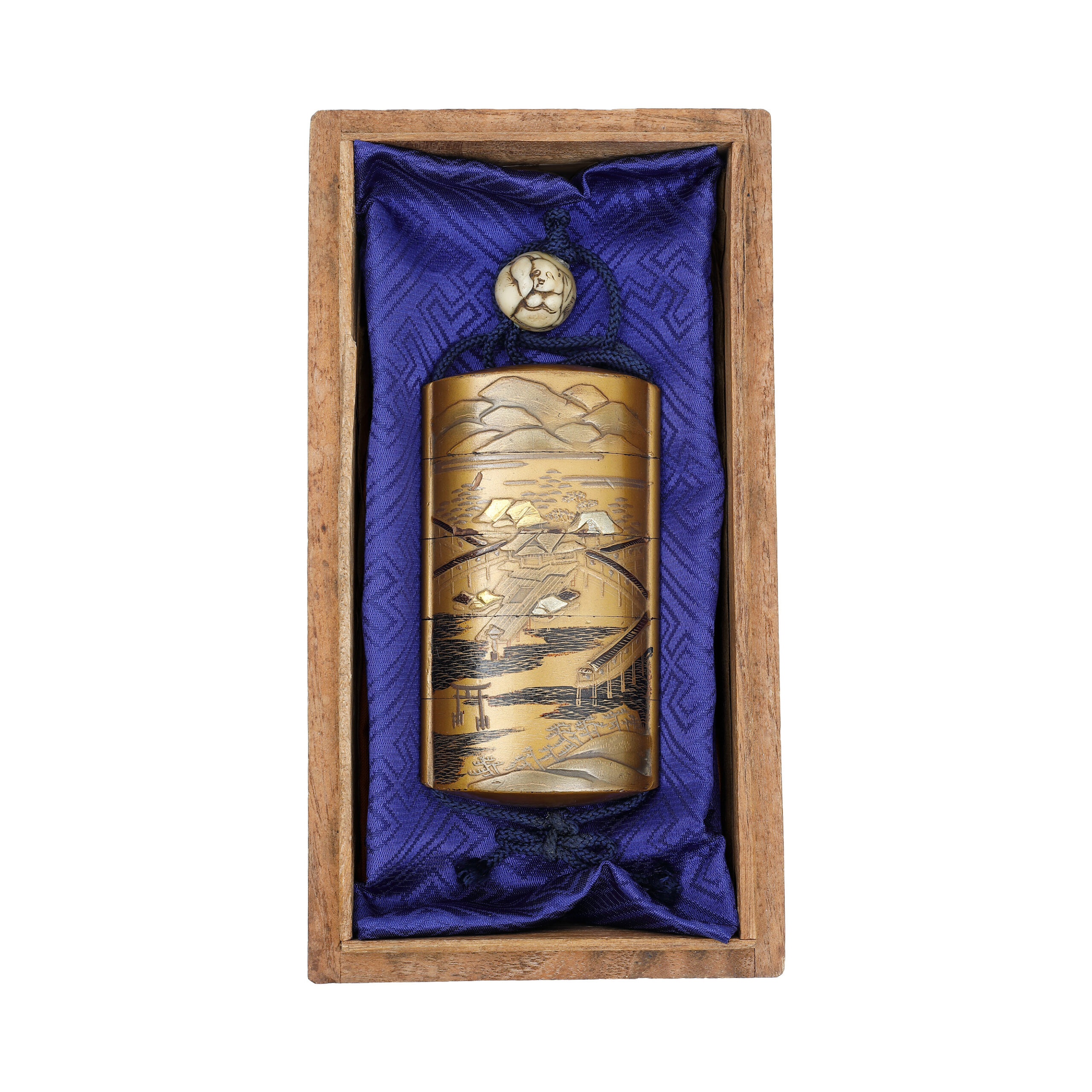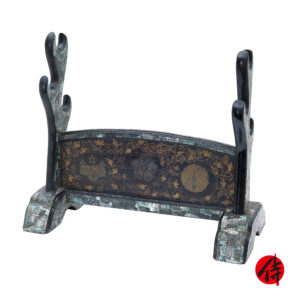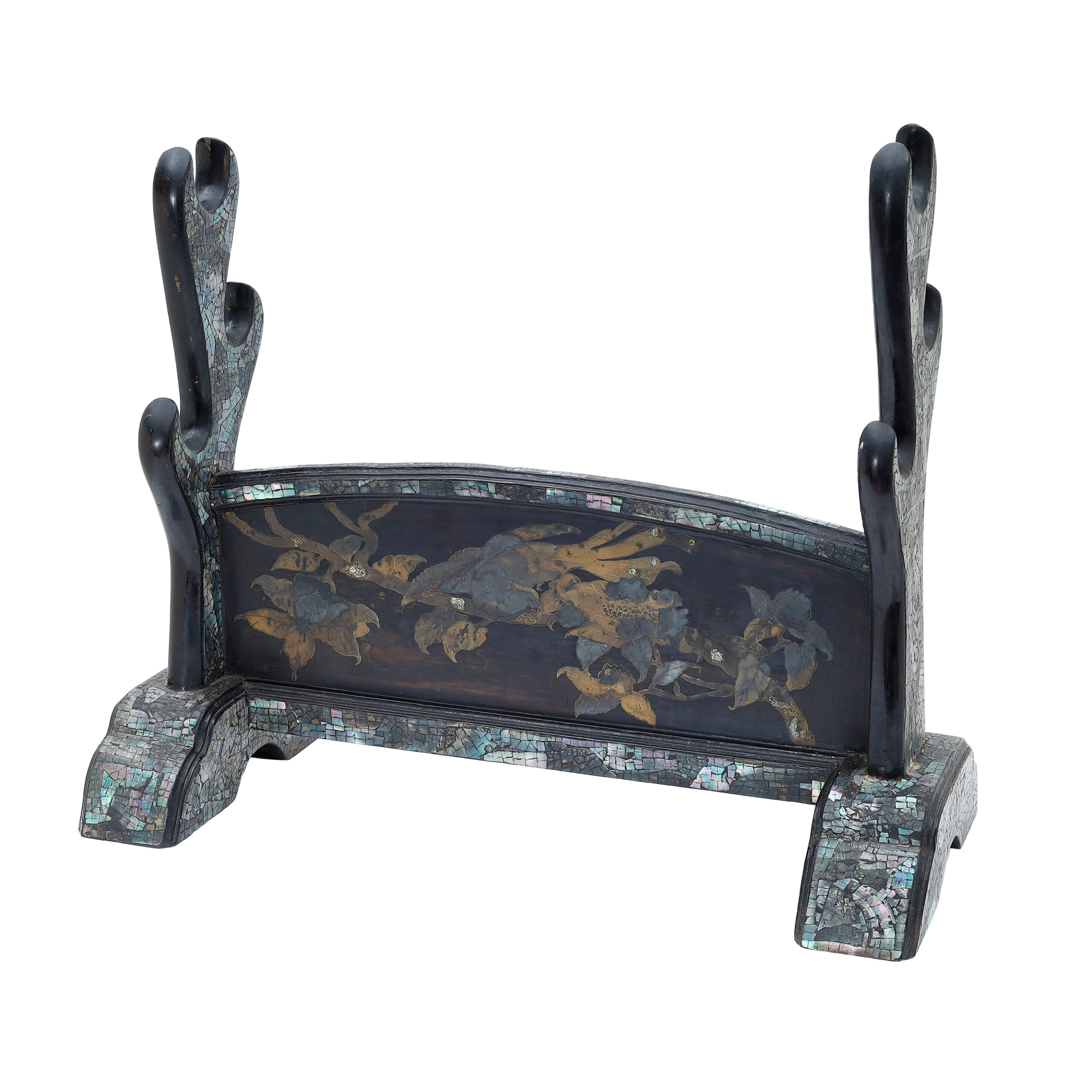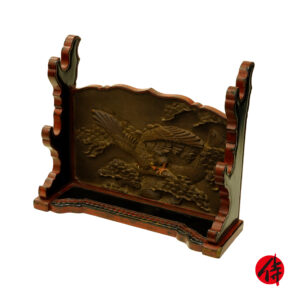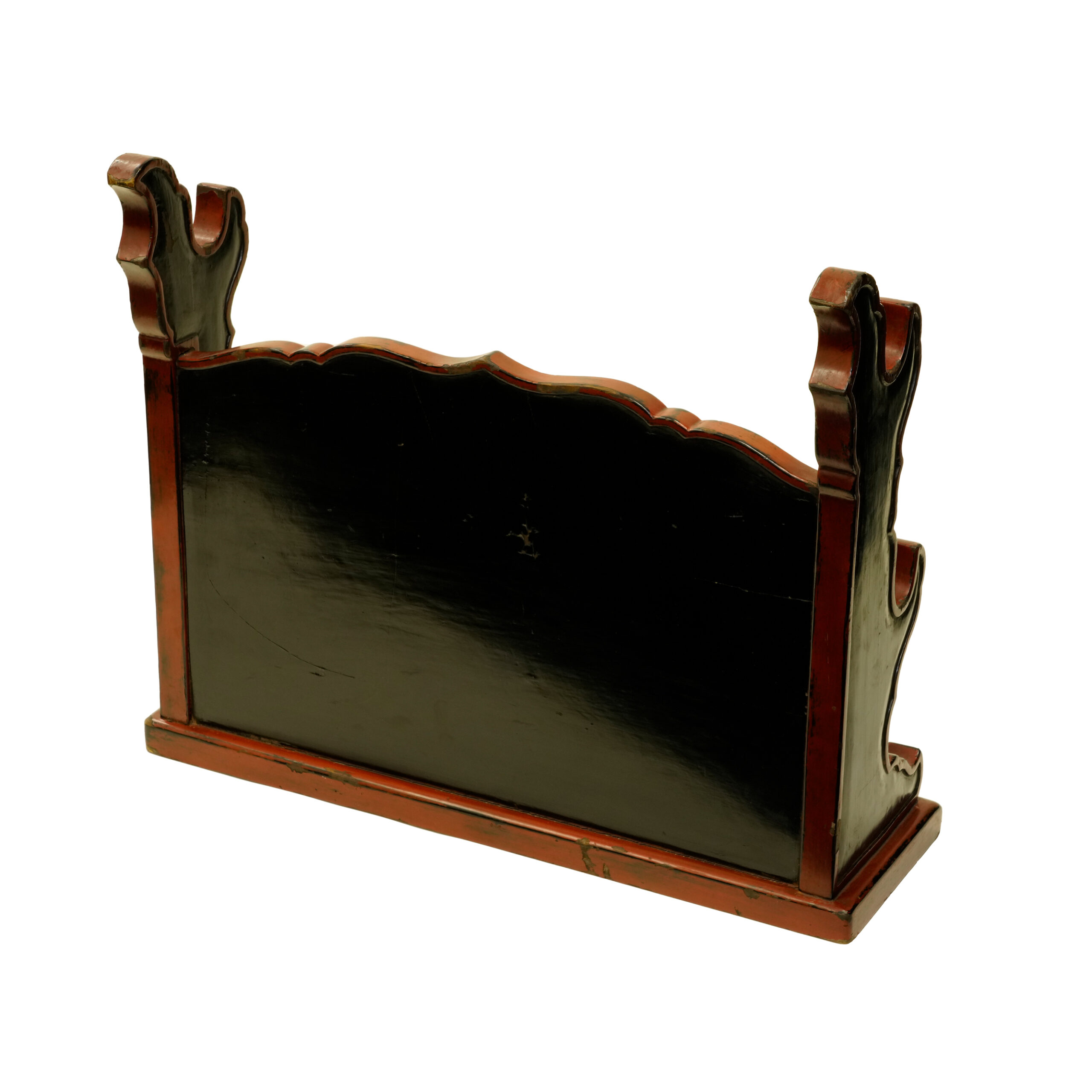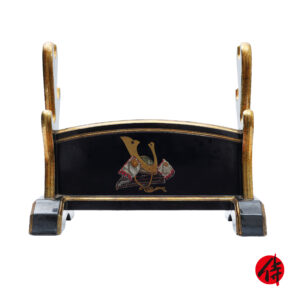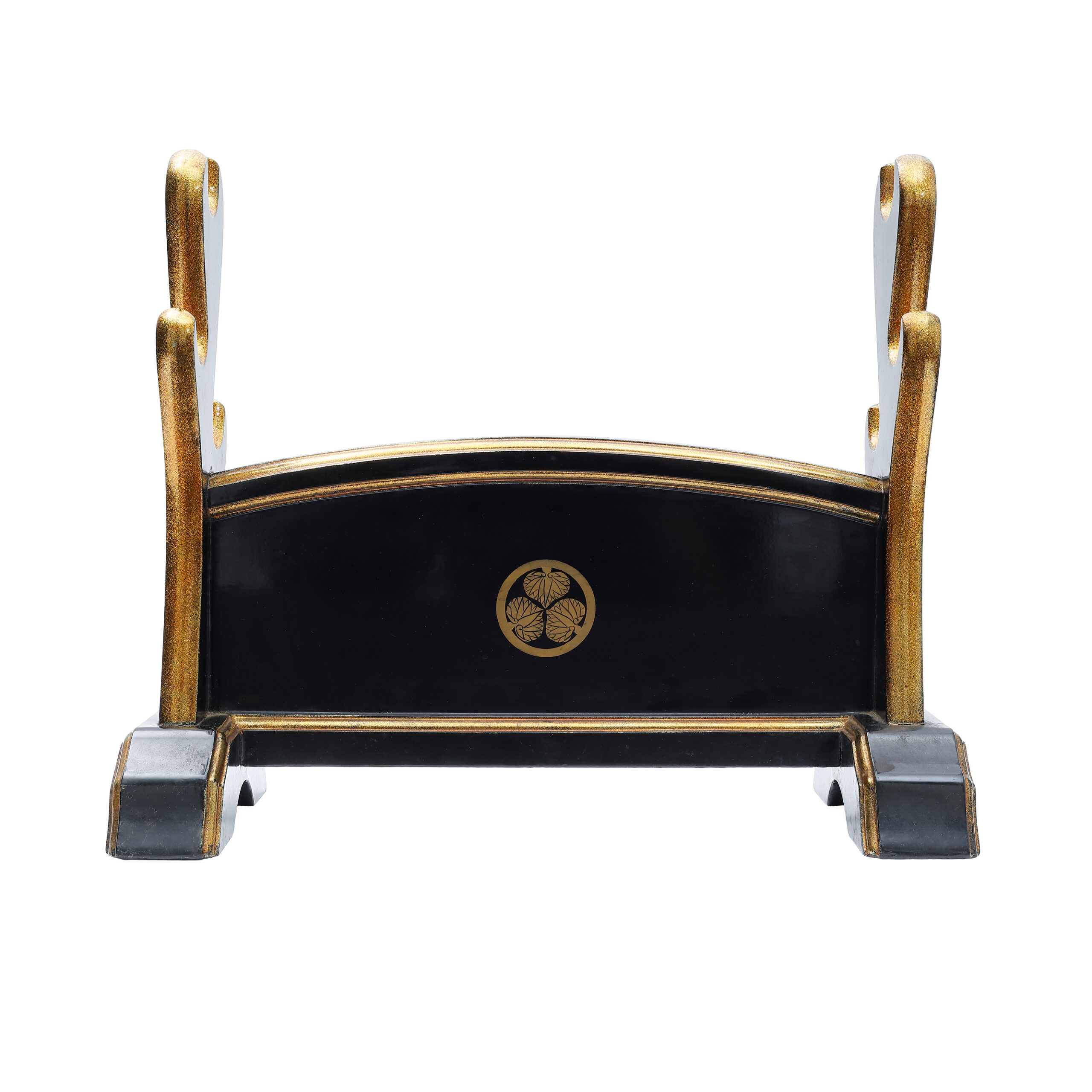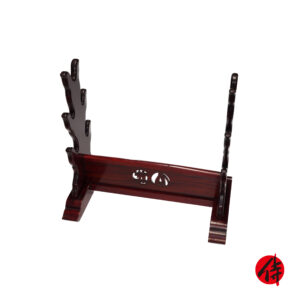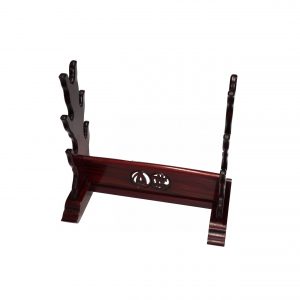Description
This antique wooden sword stand is suitable for exhibiting a Japanese sword, especially a Tachi sword, as seen in the example photos. Also, this sword stand is entirely painted with lacquer, and each motif is elegantly expressed with a traditional Japanese craft method, Makie (蒔絵) technique. The Makie is a typical Japanese lacquer art technique developed uniquely in Japan for about 1,200 years. Firstly, it needs to draw a picture with lacquer on the surface with a thin brush. Next, sprinkle the gold powder from above to show the pattern before the lacquer hardens. This technique makes a gorgeous and elegant look to works.
As for the design, this sword stand shows autumn plants and a deer drawn in a beautiful and delicate way. The combination of red maple leaves and deer has been used in Japanese decorations for about 1,000 years. This design is called “Fūroku-mon (楓鹿文)” and is popular as a symbol of autumn. Deer are seen as sacred animals and have long been thought of as messengers of the gods in the Shinto religion. At old shrines like Kasuga Taisha in Nara and Kashima Jingu in Ibaraki, deer are still protected and respected as “shinroku” (divine deer).
Also, a chrysanthemum flower is designed using the Raden (螺鈿) technique. A long time ago, the chrysanthemum was used as a medicine to obtain a long life in China, and it was brought to Japan with this thought in the Nara period (648-781). The chrysanthemum is one of the flowers that symbolize fall, and people have appreciated it very much since ancient times. As its petals form radially, the chrysanthemum has been likened to the sun. That is why this flower pattern is treated as the symbol of perpetual youth and longevity or good health. “Kiku no Gomon (菊の御紋)” is a kind of chrysanthemum pattern, and it has been used as the crest of the Emperor and the royal family in Japan, so it is well-known as a noble pattern.
From the Kamakura (1185-1333) period to the Warring States period (1467-1615), the chrysanthemum crest was given as a reward from the Emperor back then to the warlords who made significant contributions. For example, Ashikaga Takauji (1305-1358), who became the first Shogun of the Muromachi Shogunate, cooperated with Emperor Go-Daigo (後醍醐天皇, 1288-1339) to dissolve the Kamakura Shogunate. And Takauji was given a chrysanthemum crest.
In addition, Toyotomi Hideyoshi (1537-1598) was also given a chrysanthemum crest by Emperor Goyouzei. A theory says Hideyoshi was delighted and used this motif for furniture. At that time, the Emperor was regarded as God. Therefore, it was an irreplaceable honor for Samurais to receive the family crest from the Emperor. This is how the chrysanthemum pattern has a deep connection with Samurai culture.
Raden (螺鈿) a is traditional mother-of-pearl inlay technique, adding a shimmering, luxurious effect. The Raden is a kind of decorative technique that is often used for traditional craftworks. It uses the pearl part of seashells and puts it into the engraved surface of lacquer or wood. This Raden technique gives a gorgeous and elegant look to the work.
*As this product is an antique, there are small scratches and dents on the wood. Please check each photo and ensure its condition.
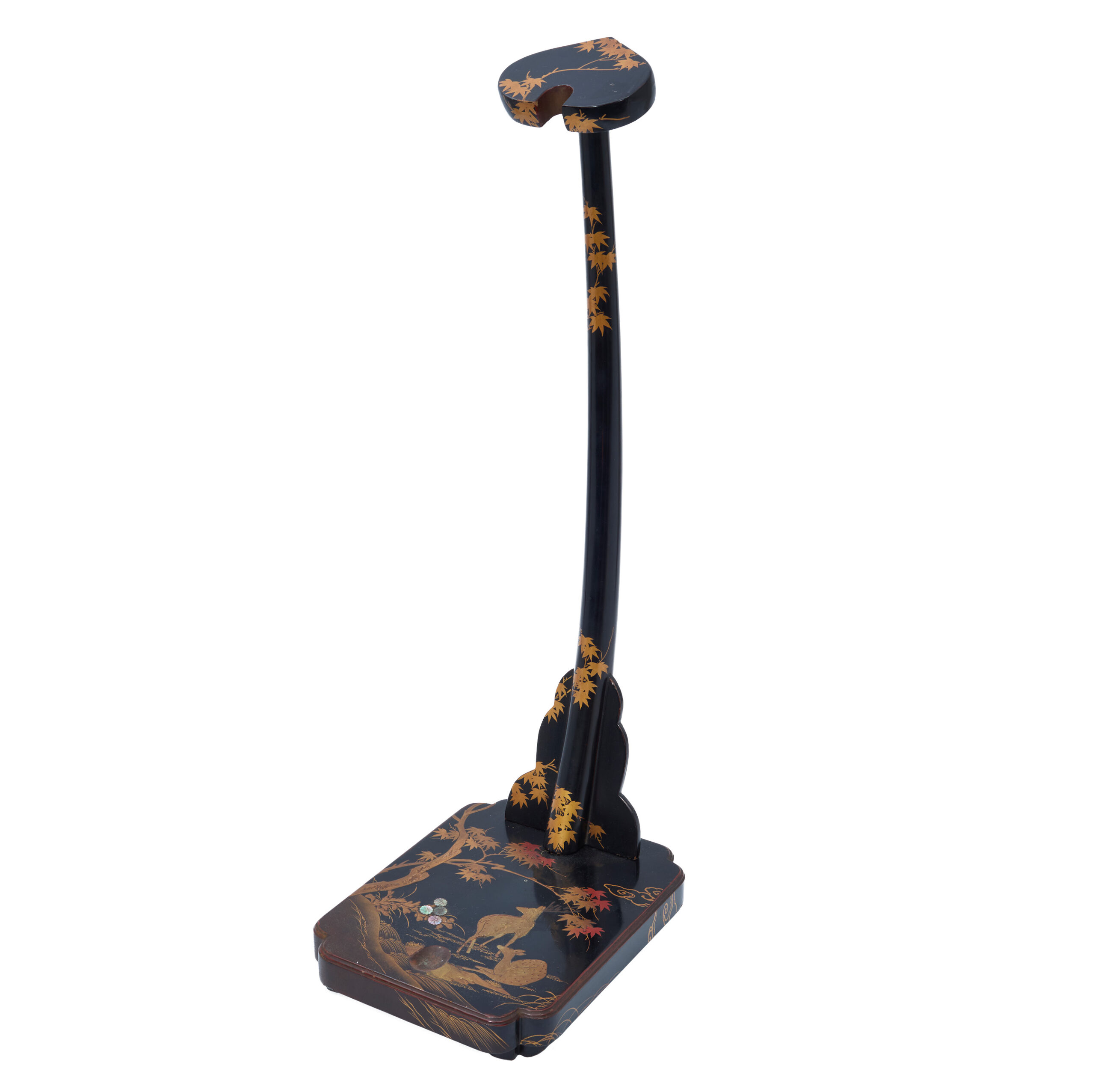
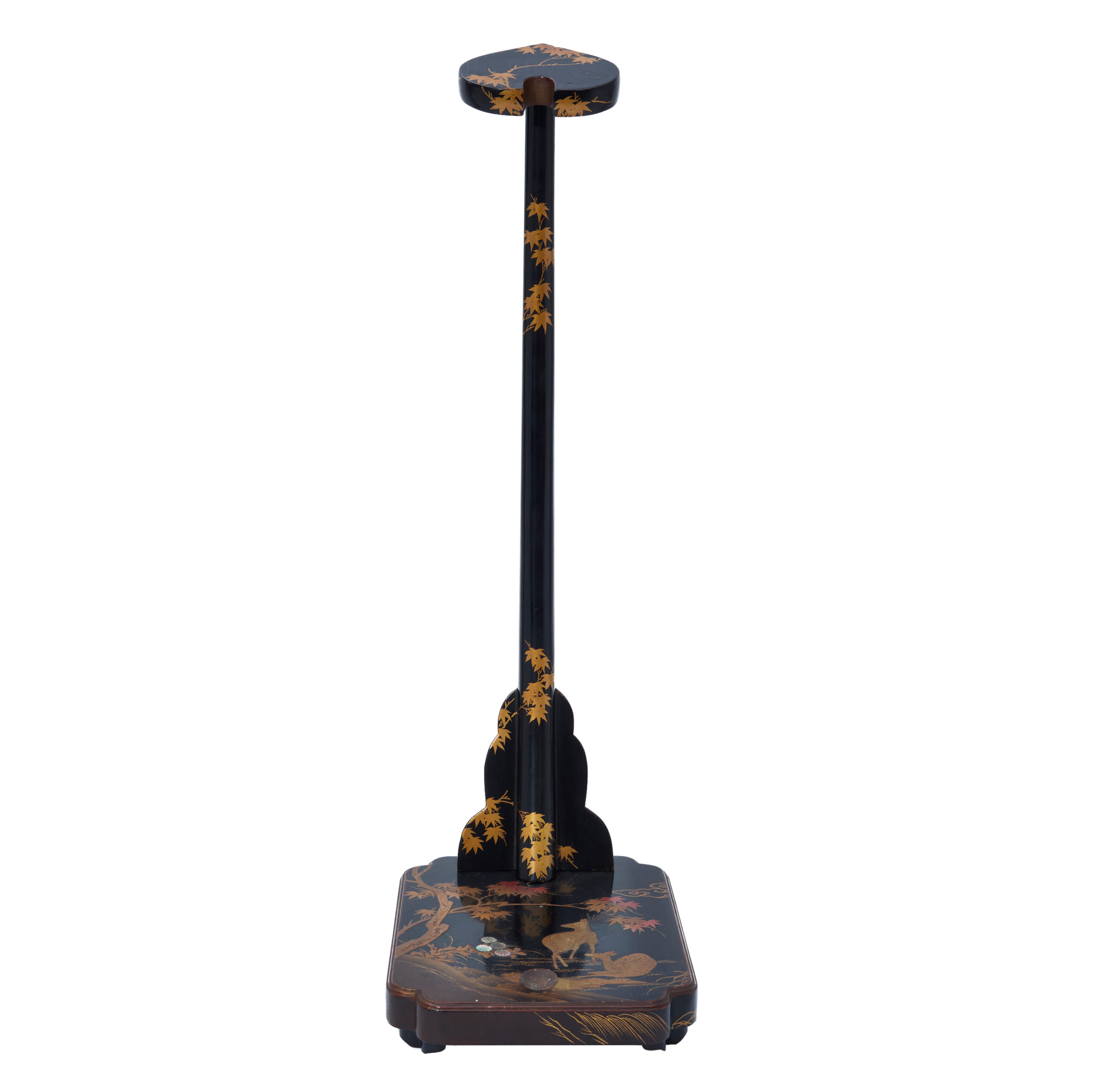


【About us】
Samurai Museum is located in Tokyo, Japan, exhibiting antique artifacts related to the Samurai history. Samurai Museum Shop is the place for those who are interested in Japanese culture and craftsmanship. We deal with antique Samurai swords/armor, traditional crafts made in Japan and so on.
【Payment method】
We accept payment through Stripe (Credit card), PayPal, Apple Pay or ChromePay, all of which are secure payment methods. Also, you don’t need to make an account on Stripe for the checkout. If you prefer other payment method, please contact us. You may either pay in JPY, USD, AUD, CAD, EUR, CHF or GBP. The price is set in Japanese Yen. Prices in other currencies are automatically calculated based on the latest exchange rate.

【Shipping duration】
We normally ship via EMS (Express Mail Service) provided by Japan Post. It usually takes at least 5-14 days to deliver the package after you place an order. Time of delivery is estimated as accurately as possible by the carrier but does not take into account any delays beyond our control such as by inclement weather, post office holiday seasons.
We offer Free International Shipping as long as we can ship your order by EMS. If you prefer other shipping carriers, please contact us.
We will inform you of the order’s tracking number via email. Please make sure you fill out your valid email address correctly.
*If you like to make sure if EMS shipping is available to your country, please contact us.

【Antique Japanese item and Export process】
After receiving the full payment from you, we will apply for its export permit from the Board of Education to legally export the item to other countries. It normally takes around 2 to 4 weeks to receive this permit. And we would like you to expect at least 1.0 – 1.5 months for your order to arrive at your given address after you ordered.
【How to make sure the condition】
Please keep in mind that what you are going to purchase is an antique item. We uploaded high resolution photos for you to check its condition thoroughly. If you like to see more photos with different angles, please feel free to contact us. We will be happy to send them to you so that you can make informed decision.
It is essential for us to know that you are happy with your choice of antique item and we are prepared to use the best of our ability to serve you.
Would you like see some more antique items for sale? Please check the link below. We hope you can find your favorite item.
https://www.samuraimuseum.jp/shop/product-category/antique/
